From classic models, which we all know, to more complex products with a modern design, from a few dozen to over a thousand euros: electro-insecticides are the latest innovation on the front of the war against mosquitoes. These devices use a combination of light and chemical stimuli to attract mosquitoes near an electrified grid that electrocutes them at the slightest contact, or a fan that sucks them in and traps them, quickly leading them to death by dehydration. Already from this rather general description, the strong point of these products emerges: they do not require insecticides to kill insects.
1. Effectiveness
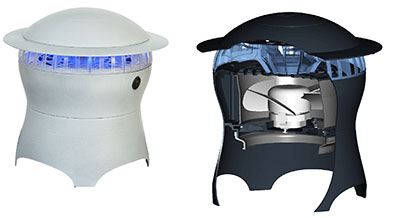 Perhaps because of the sometimes high price, or because of the unreliable advertising slogans, the fact is that many users place excessive expectations in electro-insecticides. However, we must not forget that there is no magic product capable of eliminating the mosquito problem by itself and even electro-insecticides must be integrated into a multi-level control strategy (larvicides, adulticides, etc.).
Perhaps because of the sometimes high price, or because of the unreliable advertising slogans, the fact is that many users place excessive expectations in electro-insecticides. However, we must not forget that there is no magic product capable of eliminating the mosquito problem by itself and even electro-insecticides must be integrated into a multi-level control strategy (larvicides, adulticides, etc.).
In other words, if the number of mosquitoes is already reduced thanks to preventive action, the correct use of electro-insecticides will have an impact on the mosquito population. On the contrary, if we place a device to eliminate mosquitoes and trust that it alone will be enough to make us forget about the problem, we are on the wrong track, regardless of the model and how much money we have invested in it.
2. The area of action
On the packaging or manuals of most electric insect killers, there are phrases such as “protects an area up to…” or “covers a surface of…” : what do they mean exactly? These indications should be interpreted as the range of action of the device : in optimal conditions, mosquitoes within this area are attracted to the device. Let's take an example: if an electric insect killer declares 100 m2, it means that it attracts mosquitoes to a hypothetical circular area of 100 m2, at the center of which is the device, i.e. from a maximum distance of about 6 meters.
It is important to note that all models are effective at fairly short distances, also to avoid the risk of attracting swarms of mosquitoes from distant areas into our garden. Furthermore, it is unlikely that all mosquitoes in the area of action of the device will be inexorably attracted and eliminated. These insects have systems for locating the hosts to bite that have been perfected over millions of years of evolution and, being able to choose between man and machine, they are unlikely to make a mistake.
3. Outdoor electro-insecticides
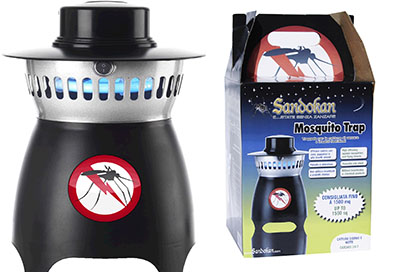 Derived from models that have already been in use for years in professional activities, such as restaurants, several “hobbyist” devices for capturing mosquitoes in gardens have recently been introduced onto the market.
Derived from models that have already been in use for years in professional activities, such as restaurants, several “hobbyist” devices for capturing mosquitoes in gardens have recently been introduced onto the market.
Because they will be exposed to rain and humidity, outdoor electric insect killers do not have electric grills, but suction fans, are equipped with transformers with low voltage direct current outputs and have excellent water resistance capabilities.
The more expensive models must be connected to gas cylinders for the production of carbon dioxide (CO2), one of the strongest stimuli that drives female mosquitoes to search for blood, for laying eggs. Furthermore, the capture efficiency, especially against the Tiger Mosquito, can be significantly increased with the use of chemical attractants of various types that contain the main components of human sweat. It follows that these devices involve management costs that are often not negligible.
Outdoor electro-insecticides must be placed at least 5 meters away from homes and near stagnant water and shaded areas rich in vegetation, where mosquitoes – respectively – develop and seek refuge. If placed in large numbers and at the beginning of the season, they can lead to a certain preventive action by containing the insect population before it reaches unsustainable levels.
4. Indoor electro-insecticides
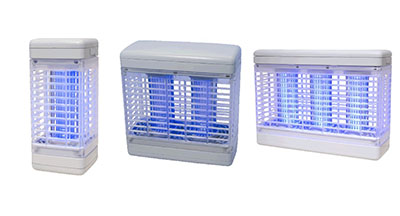 The insect exterminator with blue neon and electrified grill that accompanies summer evenings in outdoor restaurants with sizzling pops is part of the memories of many of us. Over the years, this type of device has benefited from continuous technical updates: the presence of various types of lights (LED, ultraviolet, infrared), heat emitters, or even the addition of photocatalytic plates for the emission of small quantities of carbon dioxide (to attract mosquitoes) have improved the effectiveness of these products against mosquitoes.
The insect exterminator with blue neon and electrified grill that accompanies summer evenings in outdoor restaurants with sizzling pops is part of the memories of many of us. Over the years, this type of device has benefited from continuous technical updates: the presence of various types of lights (LED, ultraviolet, infrared), heat emitters, or even the addition of photocatalytic plates for the emission of small quantities of carbon dioxide (to attract mosquitoes) have improved the effectiveness of these products against mosquitoes.
Although designed for indoor use, these devices can also be used in outdoor environments protected from the elements such as patios, terraces, gazebos, etc.
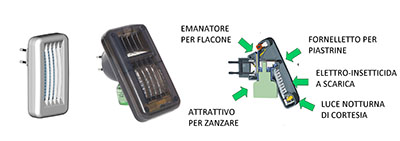 As with garden electric insecticides, some indoor models are designed to use an attractant that increases capture. Most models are equipped with electrified grid systems for eliminating insects. It is therefore advisable to choose certified products that do not cause problems in the event of accidental contact with the grid. Alternatively, there are also indoor suction traps on the market that do not have electrified grid parts and therefore pose a danger to children and pets.
As with garden electric insecticides, some indoor models are designed to use an attractant that increases capture. Most models are equipped with electrified grid systems for eliminating insects. It is therefore advisable to choose certified products that do not cause problems in the event of accidental contact with the grid. Alternatively, there are also indoor suction traps on the market that do not have electrified grid parts and therefore pose a danger to children and pets.
5. Where to place the electric insecticides
The electric insect killers should be placed upwind of the house, near shaded and damp areas but not under bushes or in shrubs or tall grass. If there is an area of standing water (ditches, ponds, etc.) near the house, place the trap between this area and the house. Keep away from street lamps, twilight lights and other sources of light that are active at night. It is not recommended to use in dusty places or on windy days.


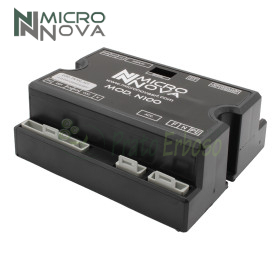
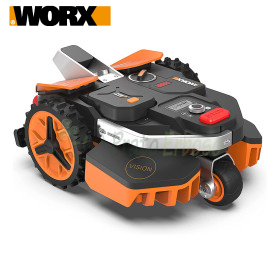

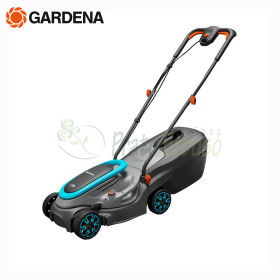
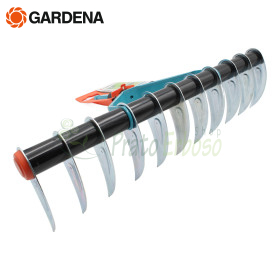

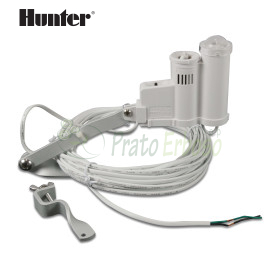

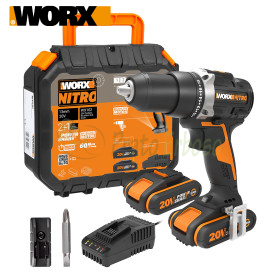
 Perhaps because of the sometimes high price, or because of the unreliable advertising slogans, the fact is that many users place excessive expectations in electro-insecticides. However, we must not forget that there is no magic product capable of eliminating the mosquito problem by itself and even electro-insecticides must be integrated into a multi-level control strategy (larvicides, adulticides, etc.).
Perhaps because of the sometimes high price, or because of the unreliable advertising slogans, the fact is that many users place excessive expectations in electro-insecticides. However, we must not forget that there is no magic product capable of eliminating the mosquito problem by itself and even electro-insecticides must be integrated into a multi-level control strategy (larvicides, adulticides, etc.). Derived from models that have already been in use for years in professional activities, such as restaurants, several “hobbyist” devices for capturing mosquitoes in gardens have recently been introduced onto the market.
Derived from models that have already been in use for years in professional activities, such as restaurants, several “hobbyist” devices for capturing mosquitoes in gardens have recently been introduced onto the market. The insect exterminator with blue neon and electrified grill that accompanies summer evenings in outdoor restaurants with sizzling pops is part of the memories of many of us. Over the years, this type of device has benefited from continuous technical updates: the presence of various types of lights (LED, ultraviolet, infrared), heat emitters, or even the addition of photocatalytic plates for the emission of small quantities of carbon dioxide (to attract mosquitoes) have improved the effectiveness of these products against mosquitoes.
The insect exterminator with blue neon and electrified grill that accompanies summer evenings in outdoor restaurants with sizzling pops is part of the memories of many of us. Over the years, this type of device has benefited from continuous technical updates: the presence of various types of lights (LED, ultraviolet, infrared), heat emitters, or even the addition of photocatalytic plates for the emission of small quantities of carbon dioxide (to attract mosquitoes) have improved the effectiveness of these products against mosquitoes. As with garden electric insecticides, some indoor models are designed to use an attractant that increases capture. Most models are equipped with electrified grid systems for eliminating insects. It is therefore advisable to choose certified products that do not cause problems in the event of accidental contact with the grid. Alternatively, there are also indoor suction traps on the market that do not have electrified grid parts and therefore pose a danger to children and pets.
As with garden electric insecticides, some indoor models are designed to use an attractant that increases capture. Most models are equipped with electrified grid systems for eliminating insects. It is therefore advisable to choose certified products that do not cause problems in the event of accidental contact with the grid. Alternatively, there are also indoor suction traps on the market that do not have electrified grid parts and therefore pose a danger to children and pets.